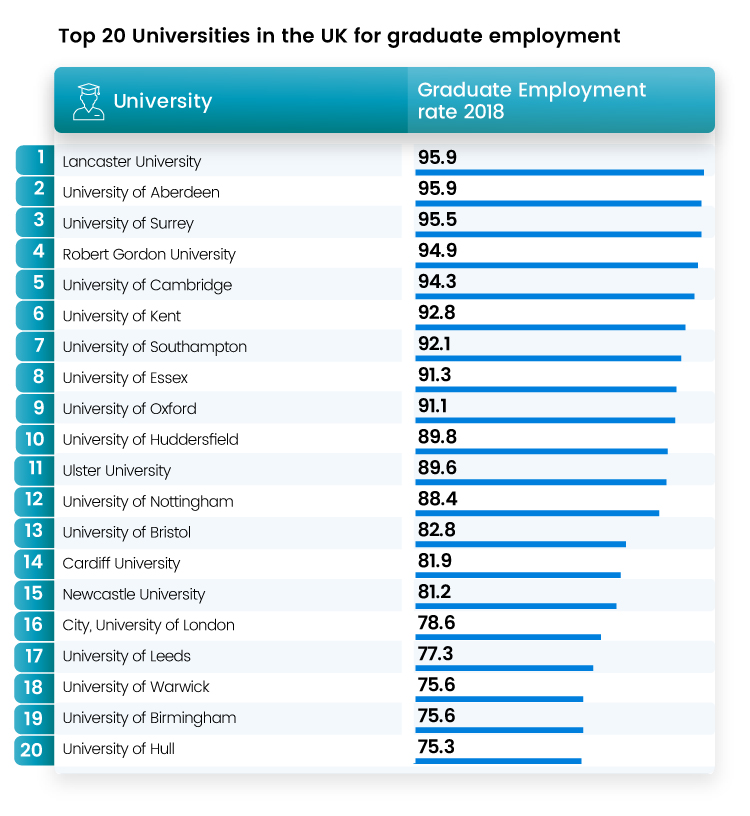The knowledge academy have pulled data from QS Graduate Employability Rankings, to find out which universities in the UK are among the top 20 for graduate employment
Thousands of students attend university for a multitude of reasons – perhaps for the social factor, or an opportunity to learn the skills necessary to join a competitive workforce. No matter the reason, students are keenly aware of the investment attending university provides, and employability matters more than ever. And for some students, enrolling at a university that has a reputable graduate employment rate will ensure a relatively easy transition once graduating into the world of employment.
The results from QS Graduate Employability Rankings, represent the percentage of students who found a job within 12 months of graduating, and the data is for 2018*.
The results place Lancaster University and the University of Aberdeen at the top of the graduate employment league table, both with 95.9% of students finding a job 12 months after graduating.
University of Surrey ranks third with a substantial 95.5% of graduates securing a job after finishing uni.
Interestingly, the University of Cambridge (94.3%) is the fifth best university in the UK for graduate employment figures, whilst its rival; University of Oxford was ninth. Although ranking ninth, figures for this renowned university illustrates an impressive 91.1% of students manage to source a job soon after finishing their studies.
Towards the bottom end of the top 20 universities, sits the University of Hull, with a graduate employment rate of 75.3%. University of Birmingham and University of Warwick are joint second from the bottom with 75.6% of graduates hired within 12 months.
Moreover, five out of the nine Redbrick universities in the country feature in the top 20 universities for graduate employment: Birmingham, Leeds, Bristol, Nottingham and Newcastle.
*Graduate employment rate is defined on topuniversities.com, where the data was derived as: It involves measuring the proportion of graduates (excluding those opting to pursue further study or unavailable to work) in full or part-time employment within 12 months of graduation. To calculate the scores, we consider the difference between each institution’s rate and the average in the country in which they are based. To preclude significant anomalies, the results are adjusted by the range between the maximum and minimum values recorded in each country or region. This accounts for the fact that a university’s ability to foster employability will be affected by the economic performance of the country in which they are situated.
Study by: https://www.theknowledgeacademy.com/












